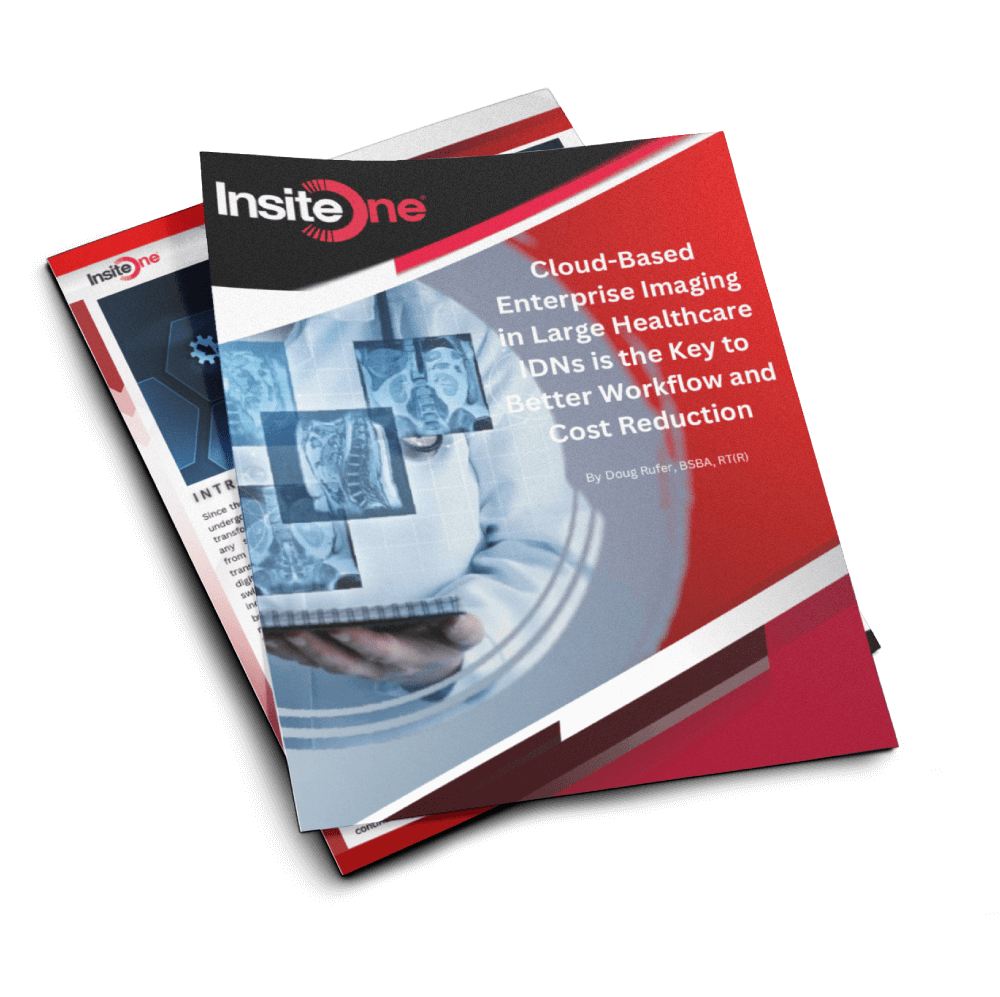Five DR Strategies Your Organization Needs Today

Introduction
You never know when a disaster will strike. Living near the coast, hurricanes and flooding are annual concerns. Central states need to prepare for tornadoes. Southwestern states may be impacted by forest fires. Virtually every hospital maybe impacted by cyber-attacks at some point or could even experience violence (like an active shooter). A recent study on disaster preparedness in New York State found that 73.3% of hospitals would not be able to operate after one week in the event of a disaster without external assistance.
The importance of having established disaster recovery plans is critical for any health system. Plus, ensuring continuity of patient care while minimizing operational impacts during and after a disastrous event must be planned for.
Depending on the type of disaster, supply lines and communication can become disrupted placing further burdens on existing patient care, as well as those that are inbound for care. Having plans in place and practicing disaster scenarios helps to minimize the impact when a disaster strikes. Covering every disaster scenario is far too extensive for this month’s blog, but here are a few tips and skills can help you plan for a disaster scenario confidently. This month, we look at five DR strategies your organization should take to help prepare for a disaster, along with some tips from InsiteOne to enhance your disaster recovery strategies.
DR Strategy #1: Risk Assessment and Planning
Conduct thorough risk assessments to identify potential hazards and vulnerabilities within your organization. Then, develop plans to mitigate those vulnerabilities. Creating a detailed disaster recovery plan that outlines specific protocols and procedures for different scenarios and running tabletop exercises for those scenarios improves your readiness when a disaster occurs.
InsiteOne Tip
When it comes to medical imaging, an off-site disaster recovery archive and strategy allows for continued operations. Natural disasters like tornados or hurricanes, may cause your facility to lose access to on-site medical images. Setting up methods to continue with image acquisition, then sending images to a cloud-based archive, helps ensure access to patient data can continue. Adding a low-cost disaster recovery PACS instance, further maintains operations, continuity of care, and improves patient outcomes.
DR Strategy #2: Backup systems, redundancies, and downtime plans
Redundant systems add costs to existing infrastructure and often are at the bottom of planning lists. Implementing redundant systems for critical infrastructure, like power supplies, data storage, and communication networks, are critical components in every disaster recovery plan. Routinely backing up all electronic health records (EHRs), patient data, important documents, and other mission critical solutions necessary for continuity of care at secure off-site locations should be established and part of your long-term disaster preparedness plans.
InsiteOne Tip
Redundant systems will duplicate some costs and some solutions may be cost prohibitive. Ensuring daily and incremental backups of your critical IT systems should occur on a routine basis to ensure there is no lapse in patient data. Store your backups in secure off-site locations. Adding redundancies (like outside access, power supplies, and cloud data storage) provides business continuity when a disaster strikes, improving continuity of care. If you are interested in exploring low-cost disaster recovery RIS/PACS/VNA solutions, contact us at InsiteOne as we provide solutions to help you maintain operations when your primary systems are down, ensuring your organization can provide continuity of care at an attractive price.
DR Strategy #3: Emergency response training
Provide regular training and drills for hospital staff to ensure they are well-prepared and familiar with emergency response protocols. Train on evacuation procedures, triage, and how to handle different types of emergencies. Emergency response training sessions provide an opportunity to practice how one would act in the event a real emergency, and that training could make the difference between life and death or help limit less downtime or data exposure.
InsiteOne Tip
Proper training for your staff is very important. Having the skills and knowledge of how to act during a disaster can mean the difference between making a disaster situation worse or lessening the impact when it occurs. Look for content from FEMA to explore guidelines and training resources to help your organization better prepare for disaster situations.
DR Strategy #4: Collaboration and communication
Foster strong partnerships and communication with local emergency response agencies, neighboring hospitals, and community organizations. Be sure to keep your internal staff well informed but also other partners and local agencies. Establishing clear communication channels for effective coordination during emergencies is critical to ensuring that everyone understands the situation and how it is being handled. Clear communication limits miscommunication and improves outcomes during an emergency situation.
InsiteOne Tip
When it comes to any disaster situation, training and strong communication protocols are critical. Defining everyone’s roles and responsibilities involved in an emergency or disaster helps limit challenges when an actual disaster or emergency occurs. Clear lines of communication and established protocols, for both internal and external parties can reduce chaos and help everyone understand when and how information will be shared. Miscommunication causes unease among staff and can potentially worsen the outcome of your situation.
DR Strategy #5: Ensure Continuity of Care and Supply Stockpiles
Continuity of care plans for patients with chronic conditions or for those with ongoing treatment needs must be established. Creating protocols to manage outpatient care, medication delivery, and medical follow-ups during and after a disaster are equally as important. Ensure you have adequate stock of medical equipment, pharmaceuticals, and other essential medical supplies on hand to sustain operations during a disaster. Depending on the disaster type, you may need plans for patient evacuations, transportation, and shelter, should the need arise to move patients to a safer location. Creating plans for post-disaster recovery, including psychological support for patients and staff, infrastructure repairs, and long-term resilience planning, should also be evaluated to prevent similar future incidents.
InsiteOne Tip
Having 24×7 anytime, anywhere access to your data is only one part of disaster planning. Not only is it important to have historical patient images and clinical data available but plans for how you will acquire and transmit images to off-site disaster archives should be considered. Establishing communication protocols, maintaining continuity of care, and offering post-disaster recovery plans helps prepare your organization to handle most emergency or disaster situations.
Conclusion
Disasters and emergencies can take many forms. Winter storms, destructive tornadoes, hurricanes and flooding are just a few to consider. The suggestions described in this blog only scratch the surface in what you should consider when creating disaster plans and should be used to encourage additional research and planning for your organization. By preparing and implementing disaster strategies, hospitals can enhance their disaster recovery preparedness and better respond to emergencies, while ensuring continuity of care continues in the most challenging situations.
Although InsiteOne does not offer complete disaster recovery preparedness planning, we do offer solutions to help ensure your imaging data is safely stored in the public or private cloud. Cloud storage ensures your data is always available on virtually any device. Our disaster recovery RIS/PACS/VNA solutions can help you maintain continuity of care should a disaster occur.
If you want to learn how InsiteOne can help with our cloud archiving or cloud-hosted DR RIS/PACS solutions, reach out to us today to start a conversation about planning and implementing an infrastructure that will ensure you are better prepared should a disaster strike your organization.




